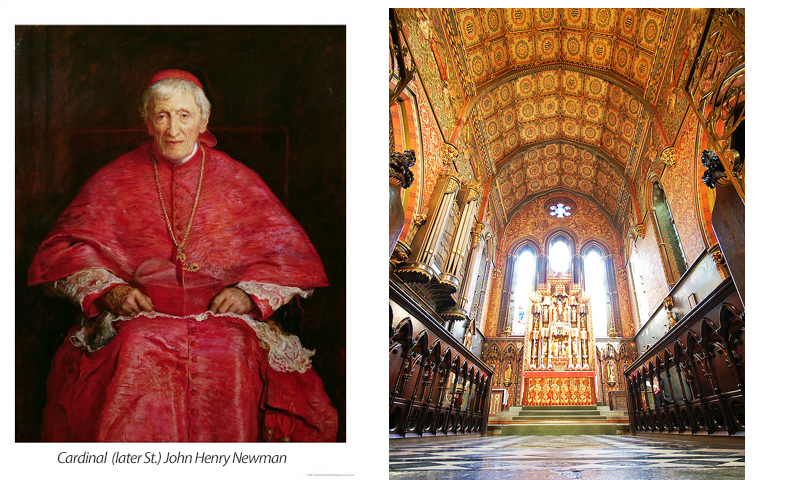
The Oxford Movement
Amidst the inclination for reform prevalent in the 1830s, some Oxford scholars of theology reacted strongly to the government taking steps to lift restrictions on other religions in Protestant Britain. The ‘Oxford Movement’, as it became known, sought to rejuvenate and re-emphasise the Church of England‘s standing by introducing aspects of Catholicism, a strategy painted as a return to its roots, or a ‘High Church’ revival.
Although this did not stop further religious deregulation, it did leave its mark and the CofE adopted a ‘middle way’ between Protestantism and Catholicism, as proposed by one of the Movement’s leaders, John Henry Newman (1801-90) of London. Previously unadorned churches were now awash with candles, imagery, open pews, robes, rituals and a new hymnody.
During the Movement’s heyday (1833-45), many supporters of this transition actually went so far as to convert to Roman Catholicism, including Newman himself, who was made a saint in 2019! Other key figures included John Keble (1792-1866) from Gloucestershire and Professor Edward Bouverie-Pusey (1800-82) from Berkshire. They argued that the CofE was a truly ‘catholic’ ~ lowercase c ~ church. The Movement published 90 Tracts explaining both how the CofE could be improved and in what respects it should revert to ‘tradition’ as they saw it.
(Images LtoR: John Henry Newman by Martin Beek & richly decorated Oxford Movement church in London by Nick Garrod, both at Flickr.com / both CC BY-NC-ND 2.0)
